by bria4123 on January 31, 2012
I went to bed last night, just after writing a two-part post on Romanesque cathedrals, and something very strange happened.
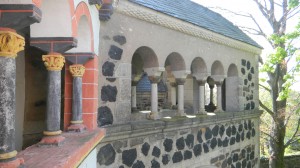
A flood of images of the insides of churches with Romanesque arches and vaulted ceilings came up as soon as I closed my eyes, and they were almost as vivid as photographs. I don’t remember seeing such realistic images with my eyes shut before. But I know why they appeared. [click to continue…]
by bria4123 on January 31, 2012
What could be more perfect than Romanesque style’s simple geometrical order?
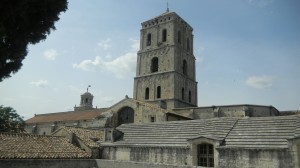
The Romanesque arches rising towards the heavens at Saint Trophime in Arles, France (above) gave the people living in its cloister a unified world under God. But this unity that church authorities tried to impose was too perfect. If you examine many Romanesque buildings deeply enough, you’ll find features that those arches couldn’t encompass. [click to continue…]
by bria4123 on January 30, 2012
Romanesque style deserves more attention than it gets. Gothic style gets top billing among medieval buffs. But appreciate Romanesque cathedrals on their terms, and they’ll greatly reward you.
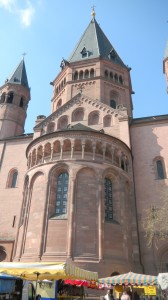
In the picture above, the cathedral in Mainz towers over the town market. Its Romanesque arches rise with simplicity and elegance that project the medieval church’s insistence on spiritual unity. But it also projects the secular ruler’s imperial glory. Both fused in this powerful art form that can leave you speechless if you explore it deeply enough. Enter if you dare. [click to continue…]
by bria4123 on January 28, 2012
Town air makes men free! This was a popular saying in the Middle Ages, and thousands of peasants deserting their farms and tax-happy lords resonated with it.
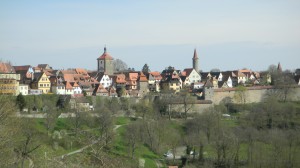
In many regions of Europe, people could win freedom from overlords by living in a town for a year and a day. A proud and industrious class of merchants emerged, and new types of experience and thought opened up. [click to continue…]
by bria4123 on January 28, 2012
Gothic style was more than art and architecture. The posts in The Many Worlds of Gothic Style series explore the meanings of Gothic architecture. But many other things happened outside the cathedrals and palaces to make Gothic art meaningful and possible.
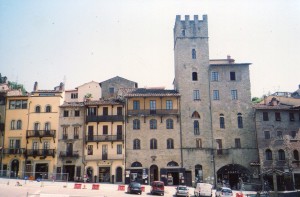
Towns began to grow in Europe in the late 10th century after barbarian invasions (Viking, Saracen and Magyar) subsided. The cultural landscape that grew became a seedbed for the great Gothic cathedrals, and it was one of the world history’s most fascinating. [click to continue…]
by bria4123 on January 27, 2012
Saint Bernard was not amused. He wasn’t a guy anyone wanted to make mad. St Bernard was spearheading the growth of the Cistercian monastic order from one abbey to over 350 with tireless propaganda that he penned from his little cell under a staircase at Clairvaux. Bernard had clout with the Pope–he could threaten to get you excommunicated. An excommunicated person was like a computer without its power supply.
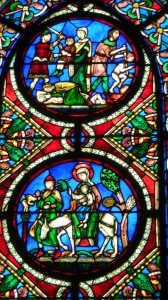
It seemed to start innocently. St Bernard and Abbot Suger wanted to renovate the Abbey at Saint Denis, and Suger wanted to install stained glass windows in order to bathe the altar in light (please see Part One). The above picture is one of the original windows in its chapel. No problem, right? [click to continue…]
by bria4123 on January 26, 2012
Gothic style seems like a miracle. No other culture created anything like it before it emerged in the mid 12th century.
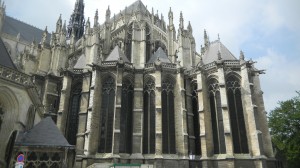 Only Europe built such high and wide inner spaces, condensed the stone so that windows take up most of the walls, and filled the interior with colored light from stained glass. These monuments are as breath-taking as the pyramids at Giza, and Angkor Wat. The world-view that they emerged and thrived in was one of human history’s most fascinating cultural landscapes. [click to continue…]
Only Europe built such high and wide inner spaces, condensed the stone so that windows take up most of the walls, and filled the interior with colored light from stained glass. These monuments are as breath-taking as the pyramids at Giza, and Angkor Wat. The world-view that they emerged and thrived in was one of human history’s most fascinating cultural landscapes. [click to continue…]
by bria4123 on January 24, 2012
Chartres Cathedral and Bourges Cathedral initiated the two classic High Gothic styles. Chartres was imitated more, and it’s much better known. But Bourges Cathedral is arguably more beautiful.
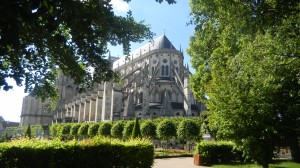
Yeah, it’s pretty on the outside, but magic happens when you enter. [click to continue…]
by bria4123 on January 23, 2012
I saw the Eiffel Tower from an even more modern perspective when I returned to it. The previous post explains how the Eiffel Tower helped usher modern and postmodern views of the world. The second time I saw it helped me appreciate an even newer way to see things.
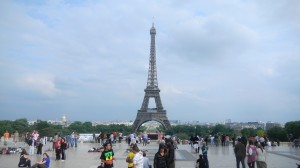
I had spent the day in the Musee Guimet. It houses one of the greatest collections of Asian art in the world. Its section on Khmer sculpture is second only to Cambodia’s National Museum’s. I also greatly enjoyed its early Indian sculpture (Mathuran) and early Chinese Buddhist sculpture (from the Northern Wei Dynasty). Closing time was nearing, and I had to rush through the Tibetan art, and I had to completely miss the Japanese works on the top floor. But when I descended the museum’s stately steps to the street, it seemed as though I had flown all over Asia in one day.
I walked across the open area in the above photo, crossed the Seine, and ate in an outdoor cafe. I could take breaks from reading the museum guidebook and savor views of the tower looming over elegant Second Empire apartments and flower displays on the street. Paris and Asia have created infinite forms–the blends from both lands sent me into so much bliss that I don’t remember what I had for dinner.
It was now dark, and I joined the crowd in front of the Eiffel Tower for the nightly show in which the building’s lights simulate fireworks. Memories of several Asian cultures’ art, and of Paris’ outdoor cafes came up as I watched the bursting lights in a crowd of people from all over the world. Is there a better model of how today’s globalized world can glitter if enough people study multiple cultures?
by bria4123 on January 23, 2012
From the Great Pyramid to the Eiffel Tower, Westerners have often liked to define themselves with towering abstract forms.
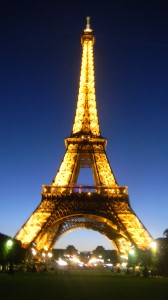
But the Eiffel Tower has inspired perspectives that the Great Pyramid’s builders probably never dreamed of. [click to continue…]










